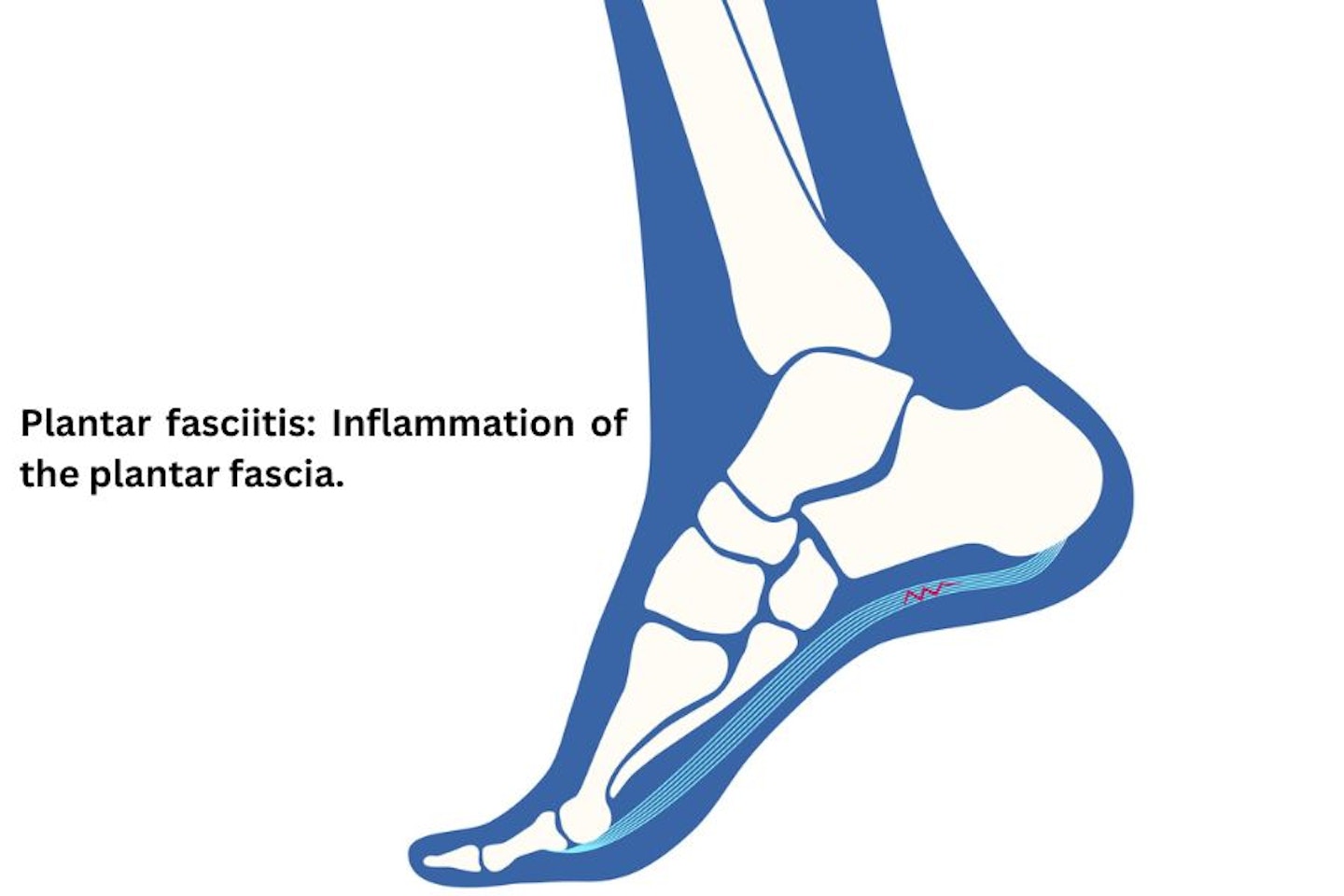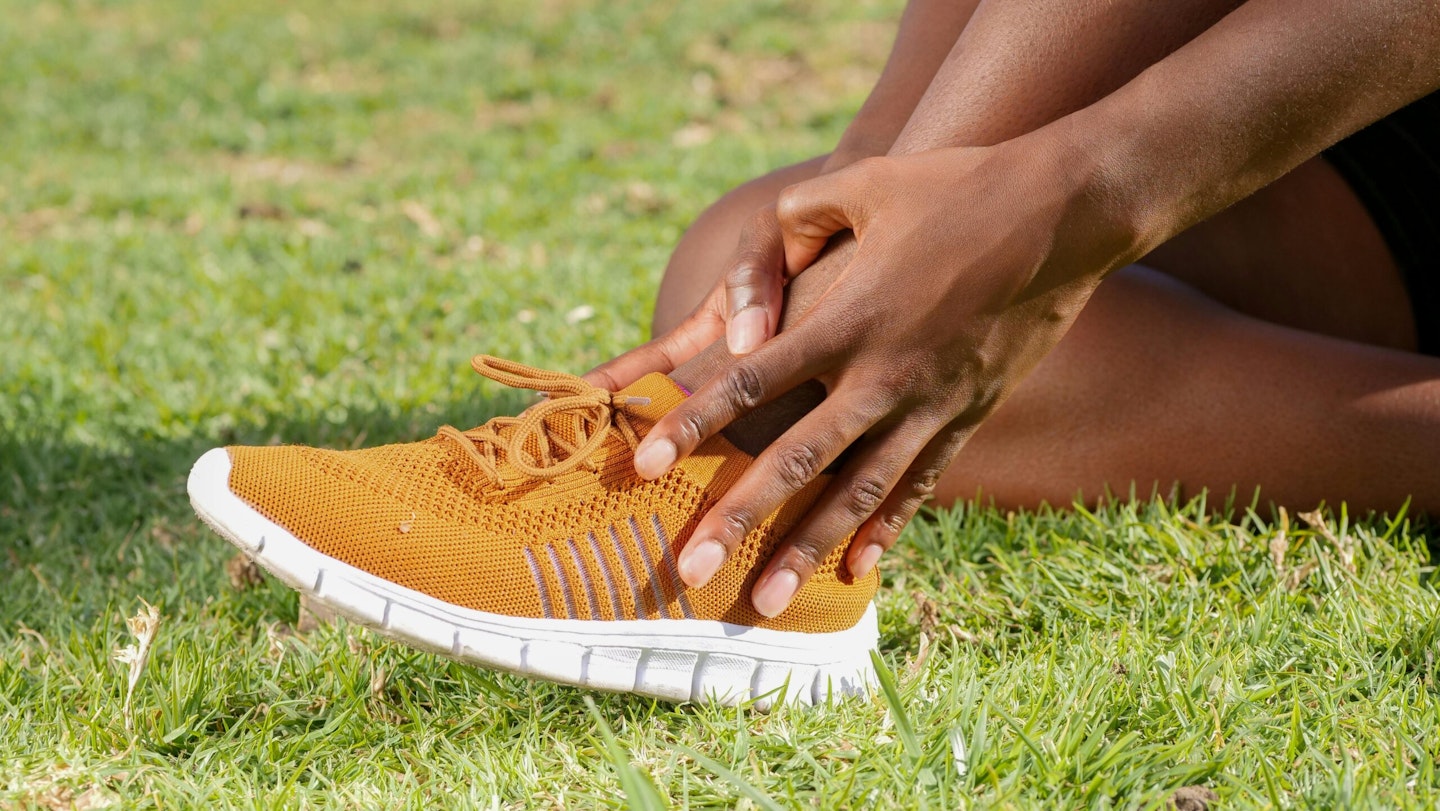The plantar fascia is a tissue band connecting your heel bone to the base of your toes. It supports the arch of your foot and absorbs shock every time you take a step. It’s an important component of your feet but can also be aggravated if mistreated. When it is aggravated, it becomes inflamed and this swelling and resulting pain is what we call plantar fasciitis. In some cases, not even the best running shoes can prevent it.
The answer:
Plantar fasciitis is a painful inflammation of the thick band of tissue – called the plantar fascia – that connects the heel bone to the toes, commonly causing heel pain.
Here’s everything you need to know about plantar fasciitis, its causes, its symptoms, and how to treat it.
Common causes of plantar fasciitis
While plantar fasciitis can seemingly crop up out of nowhere, some things may be more likely to trigger it. Once you know these triggers, it can be much easier to avoid ever ending up with plantar fasciitis in the first place. Here are the common causes:
• Recently started exercising on hard surfaces
• Exercising with a tight calf or heel
• Overstretching the sole of your foot during exercise
• Recently starting to walk, run or stand up more
• Wearing shoes with poor cushioning or support
• Recent steep weight gain
• Being over 40 years old
There are many benefits to running, but it must be respected, especially if you're a beginner. Know your body's limits and prioritise steady progress and recovery above all else.

How to treat plantar fasciitis
What to do
If you’ve developed plantar fasciitis, you’ll be desperate to know how to treat it. We recommend seeing your doctor as soon as possible if you start to experience any of the typical symptoms.
According to the NHS, these are the recommended actions you should take in order to treat it:
• Rest and raise your foot on a stool as much as possible
• Put an ice pack (or bag of frozen peas) in a towel on the painful area for up to 20 minutes every two to three hours
• Wear shoes with cushioned heels and good arch support
• Use insoles or heel pads in your shoes
• Attempt regular gentle stretching exercises
• Try exercises that are gentle on your feet, such as swimming
• Take painkillers like paracetamol and ibuprofen
• Try to lose weight if you’re overweight
What to avoid with plantar fasciitis
There are plenty of dos when dealing with plantar fasciitis, but there are also many ways to make the condition much worse. You’ll want to avoid doing these at all costs if you’re after as swift a recovery as possible:
• Refrain from taking ibuprofen for the first 48 hours
• Try not to walk or stand for extended periods
• Avoid wearing high heels or tight, pointy shoes
• Steer clear of flip-flops or backless slippers
• Try not to walk barefoot on hard surfaces
Prevention of plantar fasciitis
Plantar fasciitis can occur in anyone at any time with little warning. However, you can take steps to prevent the likelihood of it happening. Here's how:
• Maintain a healthy weight; extra weight can put extra stress on your plantar fascia
• Choose supportive shoes. Buy shoes with a low to moderate heel, thick soles, good arch support and extra cushioning
• Don't wear worn-out athletic shoes
• Apply ice periodically
• Stretch your arches intermittently
It's worth noting that if you're completely new to running, you should choose your footwear appropriately. We'd recommend a pair of solid beginner running shoes. These shoes will offer the most comfort and support to a newbie runner and thus reduce the risk of plantar fasciitis.

Common questions
Can plantar fasciitis go away?
Yes, plantar fasciitis will go away independently if you treat it correctly. Sometimes, it can take more than a year for pain and discomfort to subside completely. It’s worth seeing your doctor as soon as you begin experiencing the symptoms of plantar fasciitis. If not, complications can arise, and in the worst-case scenario, you could even need surgery.
How long does plantar fasciitis last?
It’s not unheard of that plantar fasciitis can last up to 12 months to fully heal and subside. It can take even longer if you don’t treat it right and unknowingly aggravate the condition; in this case, the recovery process will be far more drawn out.
What are the best shoes for plantar fasciitis?
When treating plantar fasciitis, the shoes you wear will play a big part in your recovery process. Shoes that are too tight and elevate your heel high above your toes are sure to worsen the situation. The bottom line is that you need footwear that allows your feet to take the most natural position without increased pressure.
Supportive shoes are essential if you’re suffering from plantar fasciitis.
Jack Barrell is a Tech and Fitness Writer for What’s the Best. He is invested in all things entertainment and keeps well up to date with the latest sports and exercise trends too. On his off days Jack can usually be found doing one of two things; lifting heavy weights – or watching his favourite Star Wars for the thousandth time.
